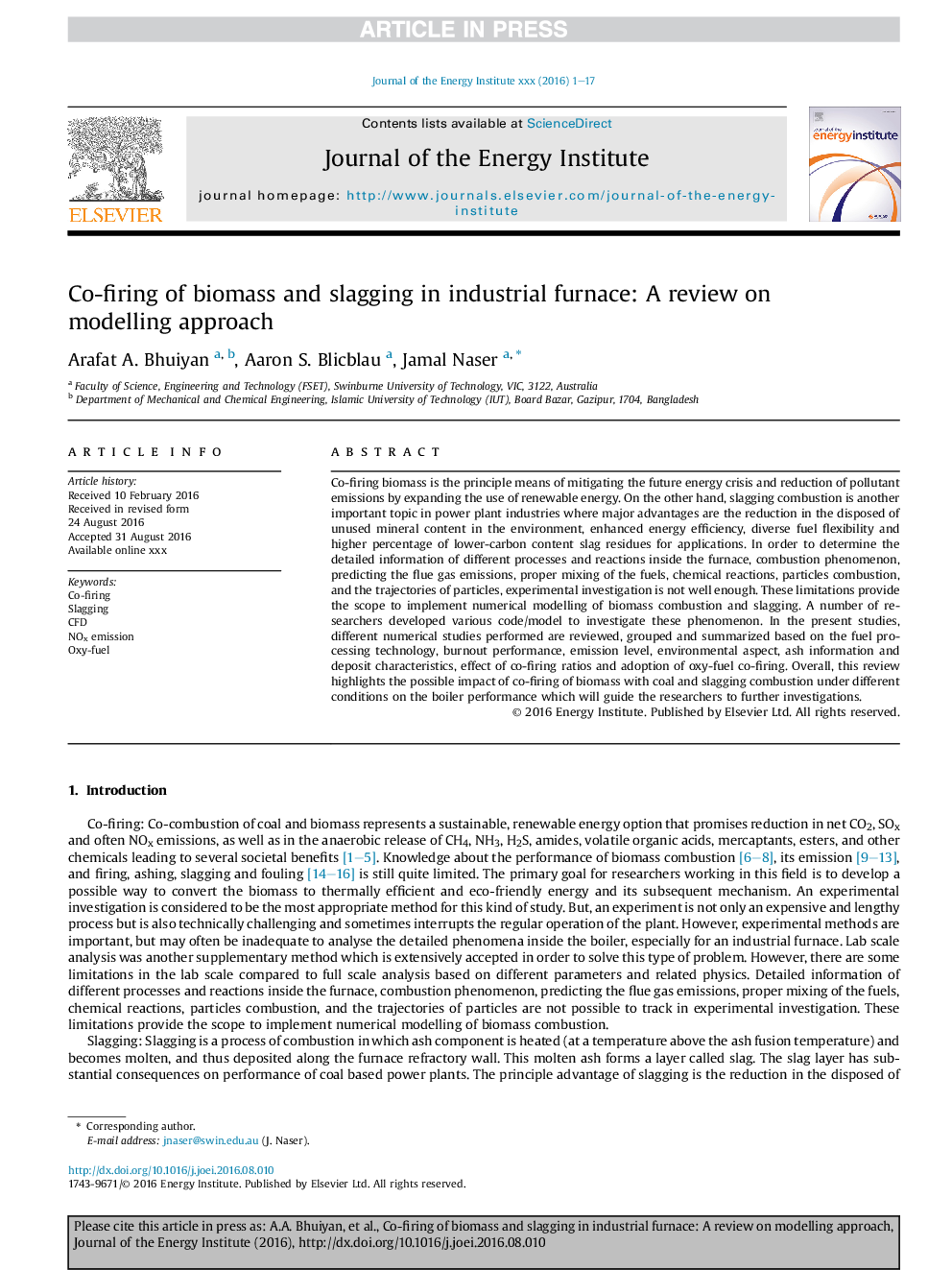| Article ID | Journal | Published Year | Pages | File Type |
|---|---|---|---|---|
| 8108780 | Journal of the Energy Institute | 2017 | 17 Pages |
Abstract
Co-firing biomass is the principle means of mitigating the future energy crisis and reduction of pollutant emissions by expanding the use of renewable energy. On the other hand, slagging combustion is another important topic in power plant industries where major advantages are the reduction in the disposed of unused mineral content in the environment, enhanced energy efficiency, diverse fuel flexibility and higher percentage of lower-carbon content slag residues for applications. In order to determine the detailed information of different processes and reactions inside the furnace, combustion phenomenon, predicting the flue gas emissions, proper mixing of the fuels, chemical reactions, particles combustion, and the trajectories of particles, experimental investigation is not well enough. These limitations provide the scope to implement numerical modelling of biomass combustion and slagging. A number of researchers developed various code/model to investigate these phenomenon. In the present studies, different numerical studies performed are reviewed, grouped and summarized based on the fuel processing technology, burnout performance, emission level, environmental aspect, ash information and deposit characteristics, effect of co-firing ratios and adoption of oxy-fuel co-firing. Overall, this review highlights the possible impact of co-firing of biomass with coal and slagging combustion under different conditions on the boiler performance which will guide the researchers to further investigations.
Related Topics
Physical Sciences and Engineering
Energy
Energy Engineering and Power Technology
Authors
Arafat A. Bhuiyan, Aaron S. Blicblau, Jamal Naser,
